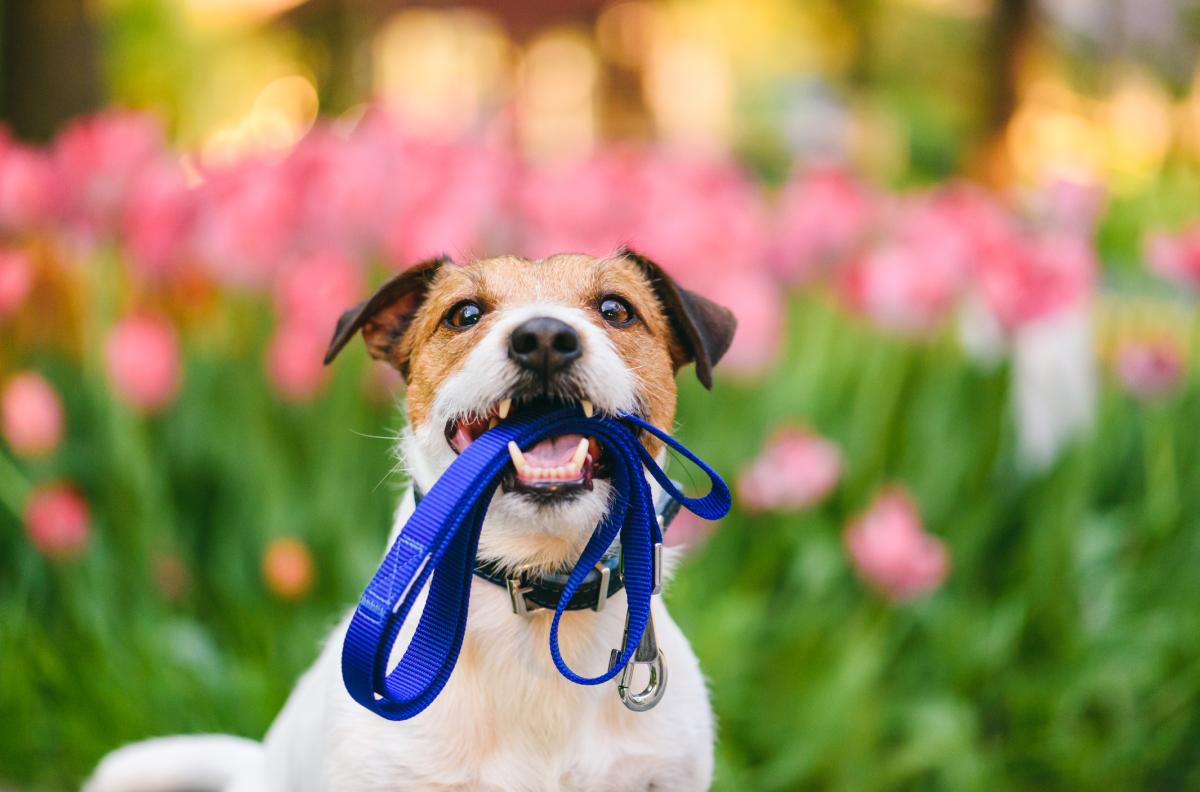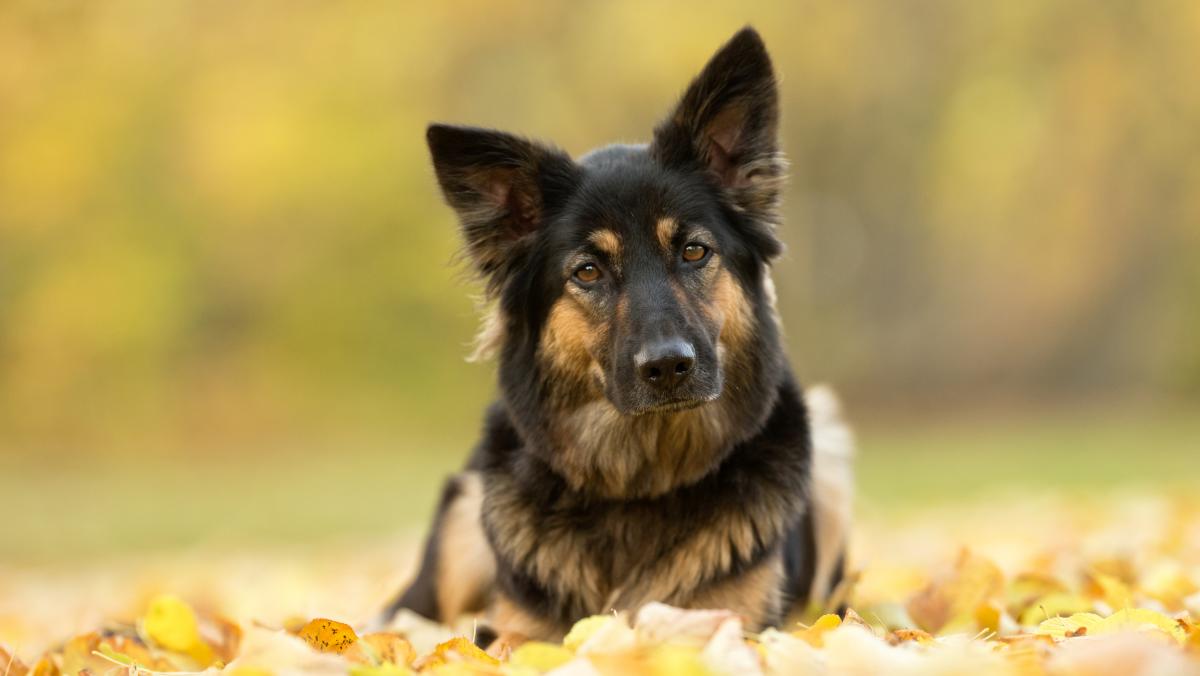Any Dog Can Bite
OVC researcher explains how to spot and prevent aggressive encounters
First encounters with unfamiliar people and situations can sometimes be intimidating and overwhelming – for both people and for dogs. This uncertainty is normal and healthy when initially exploring something new, but when it results in excessive fear in dogs it can sometimes lead to aggression and result in serious injuries to people and other animals.

To better understand factors that contribute to dog bites, Dr. Lee Niel from the Ontario Veterinary College’s (OVC) Department of Population Medicine studies behaviours in dogs from birth to adulthood. Niel and her team are conducting studies to provide a deeper understanding of the development, identification and potential prevention of fear, aggression and biting in dogs.
Chances of fear, aggression and biting are generally reduced by ensuring early introductions to a range of people, animals, and environments (termed ‘socialization’), using reward-based training approaches, and noticing when a dog needs to leave a situation.
“Teaching dogs to feel safe in new situations can reduce the chance of biting,” says Niel. “Pet owners can reduce fear and aggression in their dogs by properly socializing their pets early in life, by understanding and respecting the dog’s limits, and by making new experiences positive by pairing them with good things like treats.”
Fear and aggression prevention is a lifelong process
Early socialization teaches dogs which people and places are safe, and requires regular exposure to new people, animals, places and sounds. With the COVID-19 pandemic, there are fewer face-to-face interactions for people; this means fewer new interactions for dogs and puppies.

“Puppies adopted during the pandemic might not have experienced everything they normally would have been exposed to,” says Niel. “Fewer new experiences at two to four months old could lead to increased fear when they are older, putting them at a higher risk of biting.”
Selecting a reputable breeder that is familiar with early puppy needs can support good behaviour later in life, says Niel. Asking about experiences the breeder has provided for the puppy, such as exposure to different people, animals and sounds, is a great way to ensure the puppy has a strong start and is familiar with various stimuli. After adoption, socialization can continue to help normalize and maintain calmness during new experiences.
Pet owners can enroll in puppy classes to enhance opportunities for new experiences and mitigate fear and aggression development.
“Many people think that puppy classes are about obedience training, but they’re mostly focused on making puppies more comfortable in new situations,” says Niel. “Classes can help owners identify situations that make their dog fearful and prevent reactivity when meeting new people or dogs.”
Introducing a dog to new experiences at two to four months is ideal. “Puppies start learning about their environment when they are only a few weeks old,” says Niel. “Dogs can start learning to become comfortable with new experiences at any age, although it may take more time and understanding with older dogs.”
Desensitization and counterconditioning can help dogs of any age build confidence. The gradual introduction to a situation or interaction that causes discomfort desensitizes the dog to the situation, and counterconditioning which includes pairing gradual exposure with treats over multiple sessions can slowly turn a stressful situation into a positive one.
Gradual exposure is important to keep the experience as positive as possible and prevent the dog from escalating into a fear or aggression response. Niel emphasizes that fear and aggression in dogs are related to the environment they are in and are not breed-specific. The assumption that different breeds are more friendly than others may create a false sense of security.
“Although older dogs take more time to get used to new things, this exposure is incredibly important to improve interactions with other pets and people, as well as to reduce both owner and dog stress during outings,” says Niel.
Watching for the signs of a dog bite

“Even a friendly dog can bite if put in a stressful situation,” says Niel.
Signs of fear are similar in both younger and older dogs, and can include pulled back ears, tucked tail, cowering posture, lip licking, yawning or panting. Changing or leaving the situation can prevent the escalation of fear into aggressive behaviours like growling, lunging or biting.
“Changes happen fast but dogs will generally show signs that they are uncomfortable before the bite happens,” says Niel. “Pet owners can watch for the signs of fear in their dogs and take action to make their pet feel safe and prevent biting.”
What does aggression in dogs look like?
Dogs generally give a series of early warning signs that can include intense staring, a frozen stance, teeth baring and growling – before they progress to lunging or biting.
How to be a good dog neighbour
Being a good dog neighbour means that the handler and the dog are confident and relaxed during everyday situations.
- Be aware of triggers that make your dog fearful and be respectful of other dogs’ triggers.
- Watch your dog for signs of fear before escalation to aggression.
- Use reward-based training to reduce the chances of aggression development in your dog.
- Short daily training sessions with your dog can help keep them out of a stressful situation using commands and guidance.
- Remember, although your dog may be calm and confident during new introductions, not all dogs are comfortable meeting new dogs. In this situation, maintain your distance.
- If your dog is reactive when seeing people or dogs, has trouble with recall or is easily distracted, classes with a qualified professional might help to improve these behaviours.
This story originally appeared in the spring / summer 2022 issue of OVC Pet Trust's Best Friends Magazine. Join our community and subscribe to the pet magazine of the Ontario Veterinary College.

